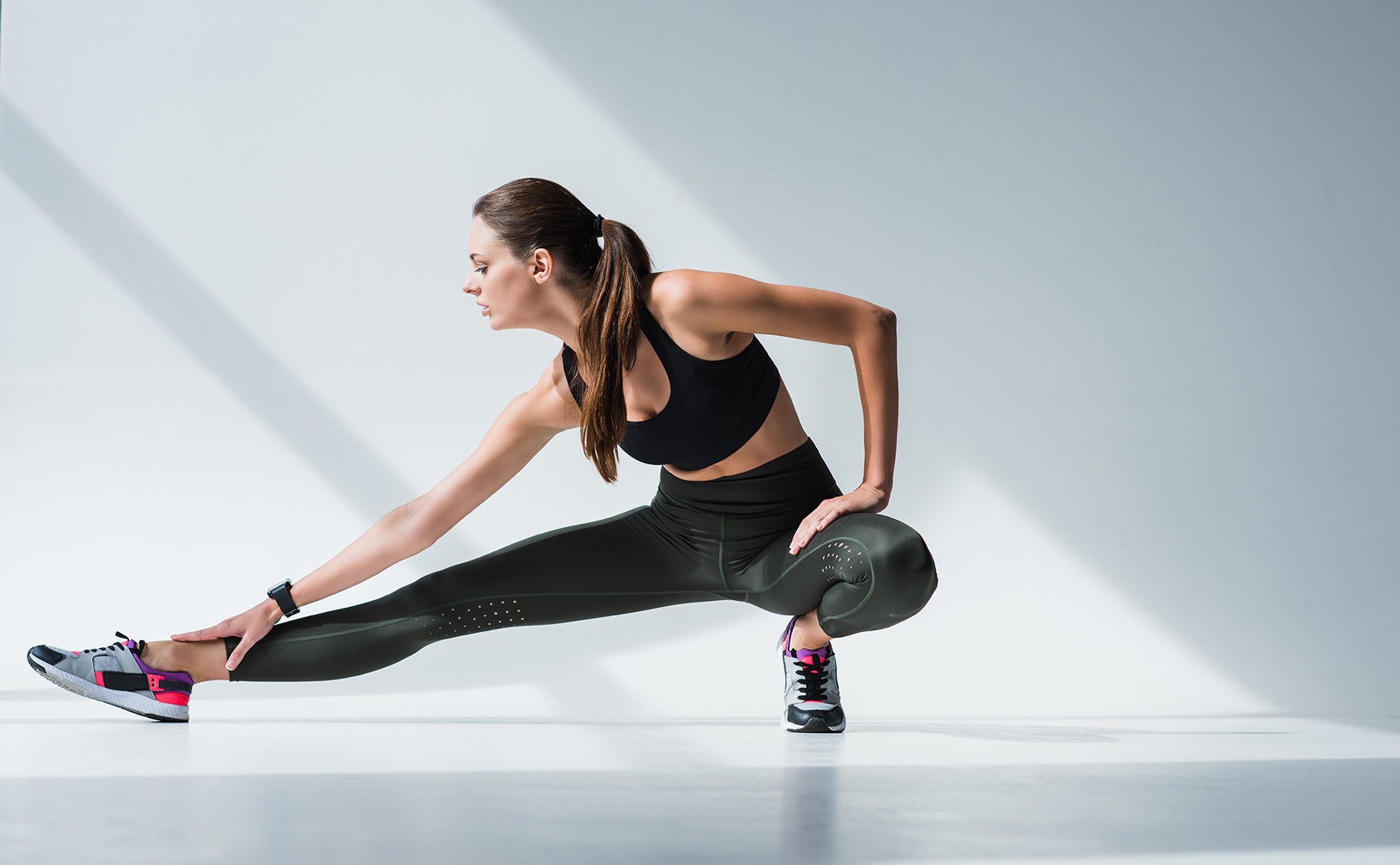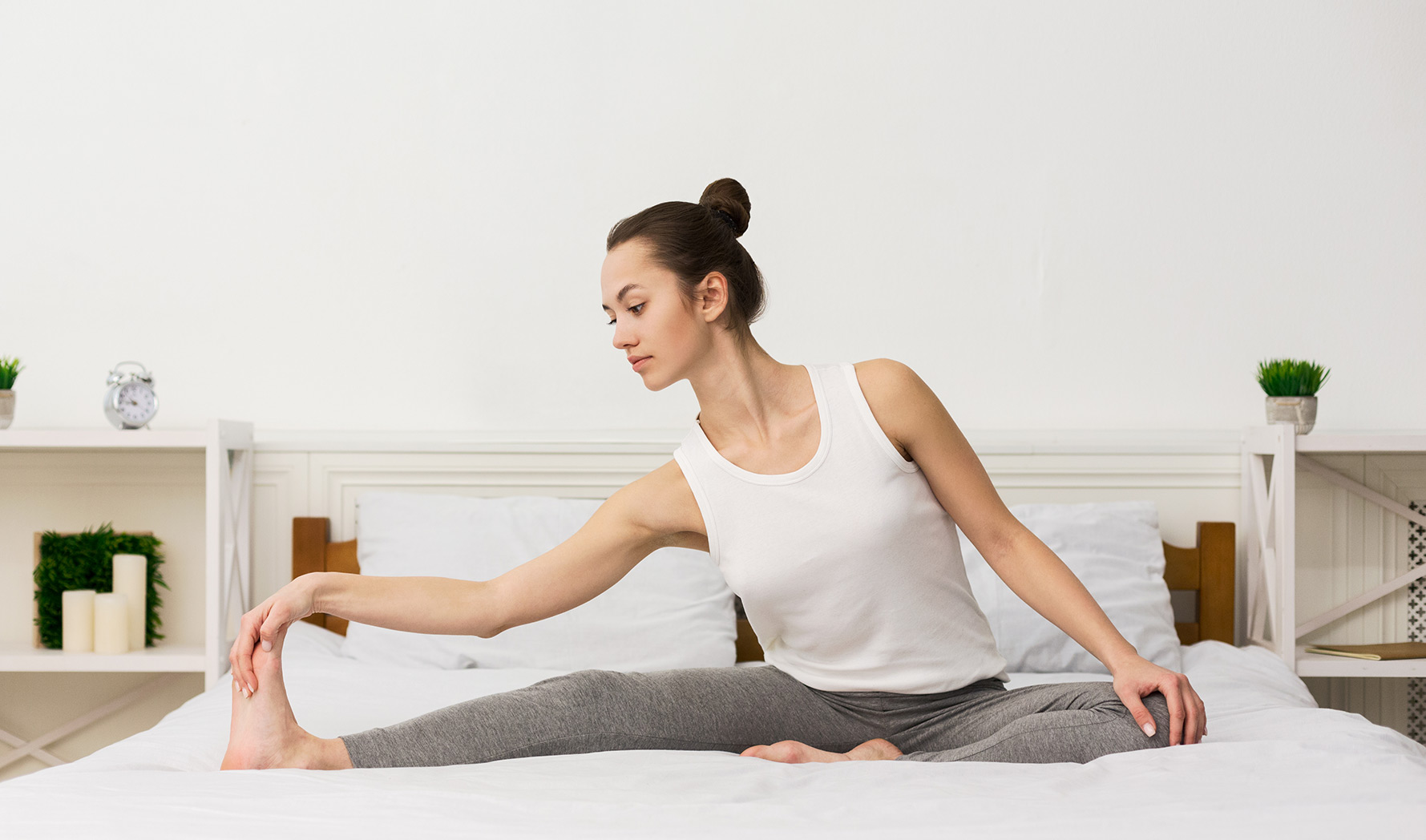
Do you want to pump up gigantic legs? And it doesn’t work out in any way? This means that there is a mistake in the methodology. Here is the correct leg workout routine for mass.
Our civilization has made solid changes to the physique. One of them is a general stoop, the other is weakened arms (in men and women), the third is dystrophy of the hamstrings. Let’s talk about the latter. The massive shift to sedentary work has resulted in people spending much of their day with bent knees. (Leg inactivity is another big problem.) When your knee is bent, the hamstring shortens and, devoid of any load, sags limply. Over time, he loses all tone and begins to “dry out” – to lose volume. Moreover, since the biceps does not experience a longitudinal tensile load, it begins to shorten, which leads to a limitation of the amplitude of many movements, in particular, bends and squats. If some 30 years ago the quadriceps was considered a priority goal, and bodybuilders earnestly squatted, then today such a technique is more likely to lead to injury, since it will further exacerbate the imbalance between the relatively strong quadriceps and dystrophic hamstrings. Conclusion? You need to swing your legs in a new way! Focus on the hamstrings! Well, what about today? Typically, the hamstrings are given a couple of isolation exercises at the end of the leg workout after squats and leg presses. And that’s funny! You will never be able to swing the quadriceps with weak hamstrings, because in the same squat, the hamstrings are the main pulling force on a par with the quadriceps! In short, here’s the “correct” foot pumping scheme. Take action!
Leg Workout Routine for Mass
- Lying Leg Curl – 3 sets per 12 reps;
- Dumbbell Romanian Deadlift – 4 sets per 10-12 reps;
- Reverse Hyperextension – 3 sets to failure;
- Wide-Stance Smith Machine Squat – 4 sets per 10-12 reps;
- Leg Press – 4 sets per 10-12 reps;
- Leg Extension – 3 sets per 12 reps.
Do not include warm-up sets. Choose a weight that will allow you to perform all the set reps perfectly cleanly. As your strength grows, increase your working weights.

The 6 Best Leg Exercises at the Gym
1. Lying Leg Curl
Target muscles: biceps femoris
Quantity: 1 warm-up set + 3 sets per 12 reps
Description: Many people use this exercise as the main thing for pumping the hamstrings of the hips, but it cannot be so. This is a relatively light isolation exercise that will not give your hamstrings a decent load. This exercise is just a deep warm-up before the basic Romanian deadlift.
Start position: Lie face down on the machine bench. Slide your ankles under the bolsters. Grasp the handles firmly to stabilize the body (A). Keep your head straight, do not tilt it back in time with the movements of your legs.
How to do: With an isolated effort from your hamstrings, pull the rollers towards your buttocks as close as possible. But do not let the pelvis lift off the bench (B). At the top, pause to extend the peak tension of the hamstrings, and only then return to the starting position. In the lower position, do not lower the weight on the support, keep it suspended.
- In the bottom position, do not straighten your knees completely. Keep them flexed.
- When pulling the rollers up to your thighs, stop immediately if your pelvis involuntarily lifts off the bench. Limit amplitude to prevent pelvic elevation, which threatens lower back injury.
2. Dumbbell Romanian Deadlift
Target muscles: biceps femoris + buttocks
Quantity: 4 sets per 12/8/8/10 reps
Description: You may have already done the Romanian barbell deadlift or the Smith machine. However, the dumbbell option is more effective and you will feel it right away! Most importantly, the dumbbells place emphasis on the upper hamstrings where they articulate with the buttocks. This area is usually a weak point, as the barbell predominantly loads the central area of the hamstrings. When you get to the heavy dumbbells, apply the wrist straps.
Start position: Stand up straight with dumbbells in straight arms (A). Bend your knees slightly. Place your feet shoulder-width apart. Fill your chest with a deep breath.
How to do: Keeping your back straight, slowly tilt your body. The dumbbells should “slide” along your legs. When the dumbbells are in the middle of your shins, freeze (B). From this position, slowly straighten up using the isolated force of the hamstrings and buttocks. In the starting position, do not straighten your knees “into the lock”.
- Legs should be kept straight throughout the set, but do not straighten your knees “in the lock”. Keep them slightly bent. A rigidly straightened knee joint will experience a great traumatic stress.
- Lower the dumbbells to about mid-calf. At the same time, keep your back pointedly straight.
3. Reverse Hyperextension
Target muscles: biceps femoris
Quantity: 3 sets to failure
Description: This is another hamstring exercise that focuses the load on the upper area. This exercise is usually done last and done to failure. You can squeeze a small dumbbell or a weighted ball between your feet.
Start position: Take the reverse bench position for traditional hyperextensions. The edge of the bench should be on the bottom of the press. “Break” the body exactly in the area of the hip joints, lowering your straight legs to the floor (A). Grasp the machine firmly with your hands to strengthen your body position.
How to do: With an isolated effort of the hamstrings and buttocks, lift the straight legs up “in line” with the body. Feet tightly closed, knees slightly bent (B). Raise your legs slowly to eliminate jerky momentum that can injure your lower back. At the top, pause to extend the peak tension of the hamstrings and glutes, and only then return to the starting position. In the lower position, do not lower your feet to the floor, keep them suspended.
- The top edge of the bench should be on the lower abdominal area to allow isolated hip joints.
- Do not lift your head up in time with your leg lifts. Keep your head straight and still.
4. Wide-Stance Smith Machine Squat
Target muscles: quadriceps femoris + buttocks + biceps femoris
Quantity: 4 sets per 12/8/8/10 reps
Description: When your legs are already quite tired, squats become risky, and it is better to do them in the Smith machine. If you squat in the usual manner with your feet shoulder-width apart, then the Smith squat will load your quads. However, if you spread your legs extremely wide, the entire width of the power frame, the exercise becomes unique. It simultaneously loads all leg muscles: quads, glutes and hamstrings! It is clear that squats with such a wide stance with a barbell are impossible.
Start position: Set the barbell bar just below your shoulders. Spread your feet wide. Sit under the bar and take the barbell over your shoulders. Grasp the bar with a wide, firm grip. Straighten your knees and straighten yourself (B).
How to do: Fill your ribcage with a powerful breath and slowly lower yourself into the squat until your hips are parallel with the floor (A). Do not tilt the body forward! Keep your back straight! From the bottom position, squeeze yourself powerfully upward, straightening your legs.
- The width of your feet is limited by the flexibility of your hip joints. First, choose a rack width that works best for you. Expand your stance gradually.
- Do not straighten your knees in the top position.
5. Leg Press
Target muscles: quadriceps femoris + buttocks + biceps femoris
Quantity: 4 sets per 12/8/8/10 reps
Description: This exercise is performed with narrow feet. Moreover, the denser the feet are, the higher the load on the quadriceps. In our case, you need, on the contrary, to place your feet wider. This will put more stress on the hamstrings and glutes. In addition, the feet must be placed at the very top edge of the platform. This will further increase the stress on these muscles.
Start position: Get into a seated leg press position. Grasp the side handles firmly. Place your feet wide at the top of the platform. Turn the toes of the feet outward (A).
How to do: Resting your heels on the platform, slowly squeeze the platform onto your straight legs. Do not straighten your knees “in the lock”, keep them slightly bent. Return slowly to starting position (B).
- In the final position, do not straighten your knees “into the lock”. It is traumatic. Keep your knees slightly bent.
- The wide amplitude can play a cruel joke on you. Bringing the knees to the chest itself is accompanied by the separation of the pelvis from the bench, which is traumatic for the lower back. Control the amplitude to keep the pelvis from moving.
6. Leg Extension
Target muscles: quadriceps femoris
Quantity: 3 sets per 12 reps
Description: This is a great final exercise for your quads. It is aimed and at the same time eliminates the risk of injury due to fatigue. In fact, your legs are already tired and any other free weight exercise would be traumatic. Since the exercise is isolating, the number of repetitions should be increased to 12.
Start position: Sit on the machine seat and grip the side handles firmly. Place your feet under the movable rollers. If their position is to be adjusted, adjust them so that your knees are bent at right angles at the start. Keep your head straight and look in front of you (A).
How to do: With an isolated quadriceps force, lift the rollers as high as possible (B). At the top, pause to extend the peak tension of the quadriceps, and only then return to the starting position.
- Changing the position of the socks (inward or outward) changes the load on the quadriceps. With the toes turned inward, the load is shifted to the inner region of the quadriceps, if the socks are turned outward, to the outer.
- In the top position, be sure to take a static pause to prolong the peak tension of the quadriceps. Lower the weights slowly and in a controlled manner.

